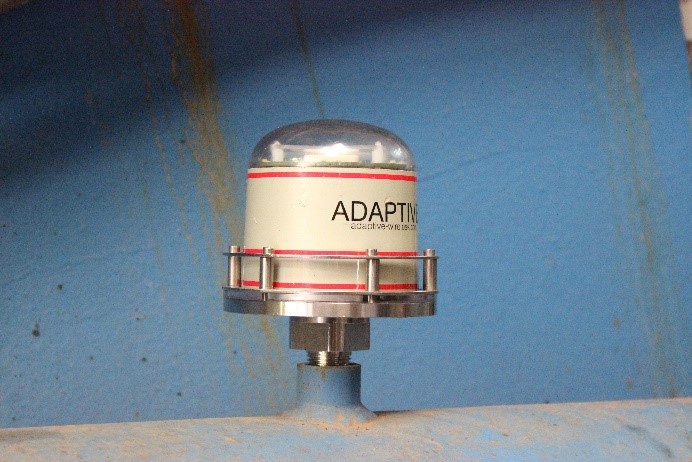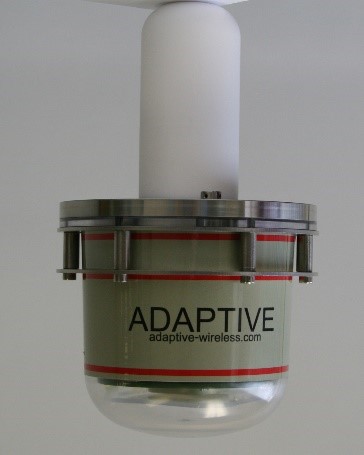- By Phillip Hunt
- Web Exclusive
Summary
Improved wireless systems
By Phillip Hunt
Wireless instruments provide critical information about physical processes, such as temperature, pressure, level, flow, and humidity, to wireless sensing networks, including WirelessHART, ISA100, Zigbee, and other 802.15.4 networks. Used to monitor the operating conditions and health of industrial equipment from engines to motors, pumps, valves, and compressors, wireless instrumentation is often used in conjunction with control systems, as well as for predictive and preventative maintenance programs.

Given the hazardous environment in plants, installing wireless instruments should be as simple and quick as possible for safety and to minimize time and disruption within the plant. Instruments should integrate into existing wireless networks, and provide critical information on physical processes, such as temperature, pressure, level, flow, and humidity.
However, despite having such a key role, these devices are often expensive, difficult, and time-consuming to install. This extends both to "physical" issues, such as initial setup requirements and location of the antenna, to information security and connection with the gateway network. In addition, ongoing support, upgrades, and device or battery replacement often equal, and even exceed, initial installation costs.
According to David Lafferty, who as former chief technology officer at BP was involved in the early development of industrial wireless, the high costs of deployment and support are the primary barriers to industrial wireless "reaching its full potential."
"If you look back to when WirelessHART was initially launched 13 years ago, we thought there would be more large-scale wireless deployments by now," says Lafferty. Today, the drive to reduce the costs of wireless deployment is spurring a reevaluation of the design of such devices, which has changed little in the past decade. Longtime manufacturers have designed solutions to address some of the fundamental deficiencies of these devices. This includes separating the sensor attachment from the antenna placement wirelessly, so the antenna can be placed for ideal signal transmission; a vastly simplified user interface that allows installation in minutes; and built-in security features.
Ease of use
Traditional wireless instrumentation has a notoriously poor user interface, including tiny LCD displays and buttons that are hard to use in the field. Given the hazardous environment in plants, installing these instruments should be as simple as possible to minimize time and disruption to the plant. However, that is not now the case; the process can be complicated and time consuming with the traditional approach.
When properly designed, wireless instruments should not have displays or buttons, because they become unnecessary. Instead, configuration can be made through the instruments' own Wi-Fi network via a phone or tablet. All interaction is done through a web page on this local network. The Wi-Fi signal is used only as needed for tasks like configuration and shut down.
Security
Because of concerns about terrorism as it relates to industrial plants, instruments require a higher level of security as critical wireless information is being relayed to control systems. With many conventional units, information can be spoofed, intercepted, or interfered with because of the lack of wireless security.
Classically, having poor security was a barrier to wireless instrument adoption. However, today adaptive wireless is removing that barrier with the highest level of security available for these types of problems. The key to that happening effectively is security that is automatically done for the installer, and that also requires nothing of the system in place.
Changes to default settings and other setup work make things more complex, and can cause incorrect setting and potential breaches. This new security is an additional and transparent layer of security that is not reliant on the quality-or lack thereof-of the existing larger network's security.
The first piece of the "best possible security" puzzle is advanced encryption. For this, one-time pad encryption has been developed for the first time in an instrument. One-time pad encryption is a cryptography technique that under the right conditions of use cannot be unencrypted. Perfect encryption is not enough, however. Wireless communications are subject to "impersonation," so authentication is required. For this, digital signatures on messages are a near 100 percent guarantee that they are legitimate. These digital signatures further embed the time of day, preventing modification or duplication (replay) attacks.
Nonrepudiation is another (industry first) key security layer. It refers to the ability to ensure that a party to a contract or a communication cannot later deny the authenticity of its acceptance on a documented reading value or the sending of a message that the party originated. For this, blockchains are used. They are inherently resistant to modification of the data. A blockchain is an open, distributed ledger that records transactions between parties efficiently and in a verifiable and permanent way. Once recorded, the data in any given block cannot be altered retroactively.
Instrument area network
To provide the best radio range, the instrument itself is separated into two parts: the end node (with highly accurate sensors at the read point) and the central controller, which contains the antenna. The ability to move the central controller up high at some distance from the end nodes, also done wirelessly, allows for better signal reception/transmission within the plant. Up to eight end nodes can be connected to a single central controller using a Bluetooth low energy (BLE) radio link that is controlled to minimize power usage.
The central controller then communicates back to the wireless sensor network (WSN) network. With this two-tier design approach, end nodes can be moved or added behind the central controller without the WSN being affected.

The wireless central controller, shown here, can be placed some distance from the end nodes, allowing for better signal reception and transmission within the plant.
This stands in stark contrast with the traditional approach, where all instruments are connected directly to the WSN (one tier), and so consume resources, including power and address space (e.g., one tier affects the licensed and limited numbers of nodes per gateway with every node added). Because most networks (like WirelessHART) involve a mesh architecture designed for resiliency and redundancy of communication paths, adding nodes at tier 1 increases the number of possible paths dramatically (square law). This can get out of control quickly, slowing installation and creating network instability.
Managing support costs
Once the wireless instruments are installed, ongoing support, upgrades, and battery placement can significantly increase overall costs unexpectedly. Ideally, installers want to treat these devices like a light bulb: when it burns out, just replace it. However, current settings stored in the device are often lost when a node is removed or fails, causing a scramble to find the configuration in documents or files in servers (never fun!)
In this more elegant solution, the configuration of any member of the central controller group can be restored through cloning, even after the node is removed or even destroyed. To accomplish this, configuration information of any node is stored in all other nodes, redundantly, and so it can be reconstituted or cloned by simply transferring the data to a new device of the same type. So long as at least one device (even just the central controller) within the cluster is intact, the others can be quickly and easily reconstructed in the field.
An over-the-air wireless update capability (an industry first) and frugal use of power have also been carefully designed into the nodes. Once the battery life exceeds the instrument life (15 years or so), the batteries do not need to be replaced. The unit grows old before the battery dies-reducing the cost and complexity of replacing batteries to zero.
"With the cost of ongoing maintenance dramatically reduced, [wireless instrumentation] is now a solution that can be scaled up to the kinds of numbers needed for the digitalization effort happening in many industries," adds Lafferty.
Reader Feedback
We want to hear from you! Please send us your comments and questions about this topic to InTechmagazine@isa.org.


